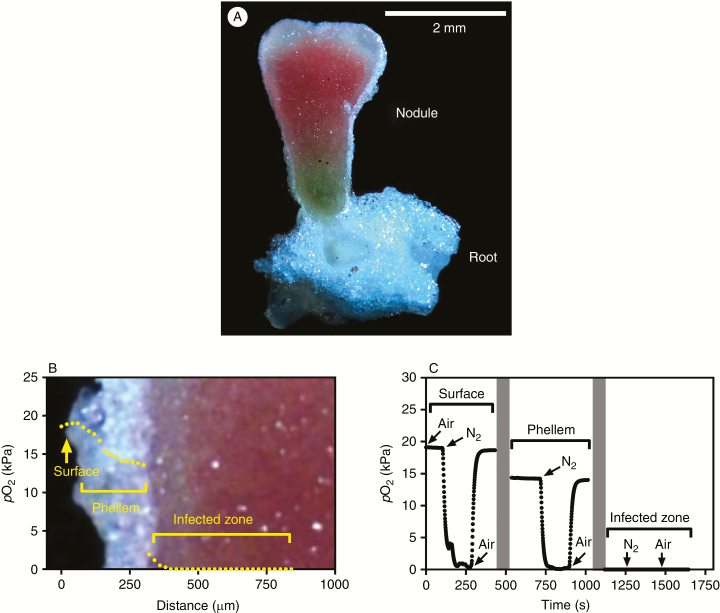Fig. 6.
(A) Cross-section of a nodule and root of Melilotus siculus inoculated with rhizobia and grown without mineral N. (B) Profile of O2 partial pressure (pO2) in a nodule attached to a root in an O2-free medium with the shoot in air. (C) Tissue pO2 at three positions (at the surface, 200 µm into the phellem and then an additional 400 µm to place the tip within the infected zone) within a nodule attached to a root with the shoot excised and the stub of the main root (with phellem) initially exposed to air, then high-purity N2, and returned to air. The nodule was ~6 cm from the exposed stub of the main root and the O2 microelectrode was inserted into the side of the nodule. Grey bars indicate that the O2 microelectrode was moved to a new position. Plants were grown in vermiculite under waterlogged conditions (20/15 °C day/night) with rhizobia but without mineral N in the nutrient solution. Treatments were imposed 23 d after seed imbibition, and the plants were measured after 21 d of treatments. The root system was in an O2-free medium, so that nodule O2 supply was dependent on internal movement via the aerenchymatous phellem of the root and of the attached nodule.

